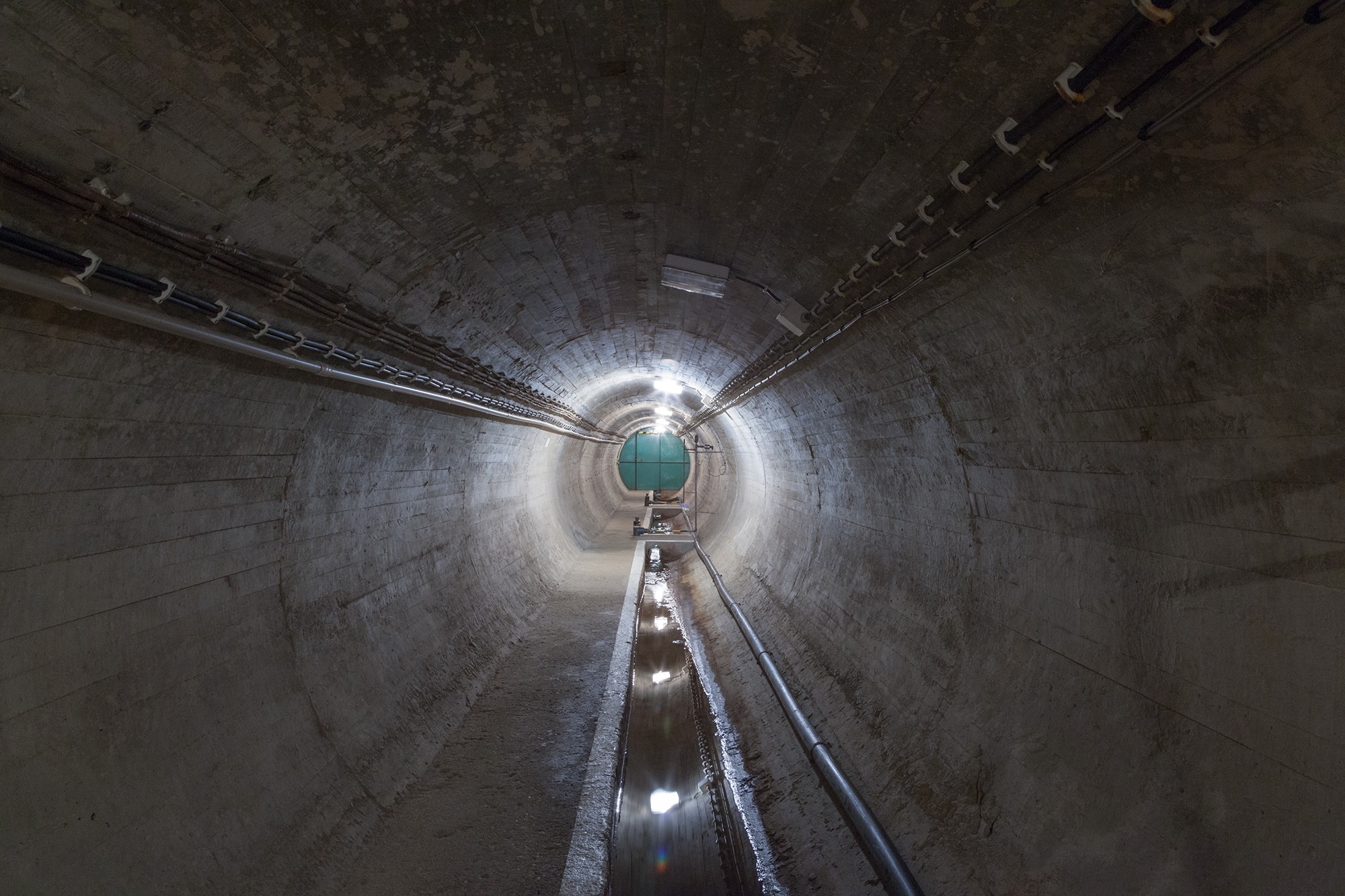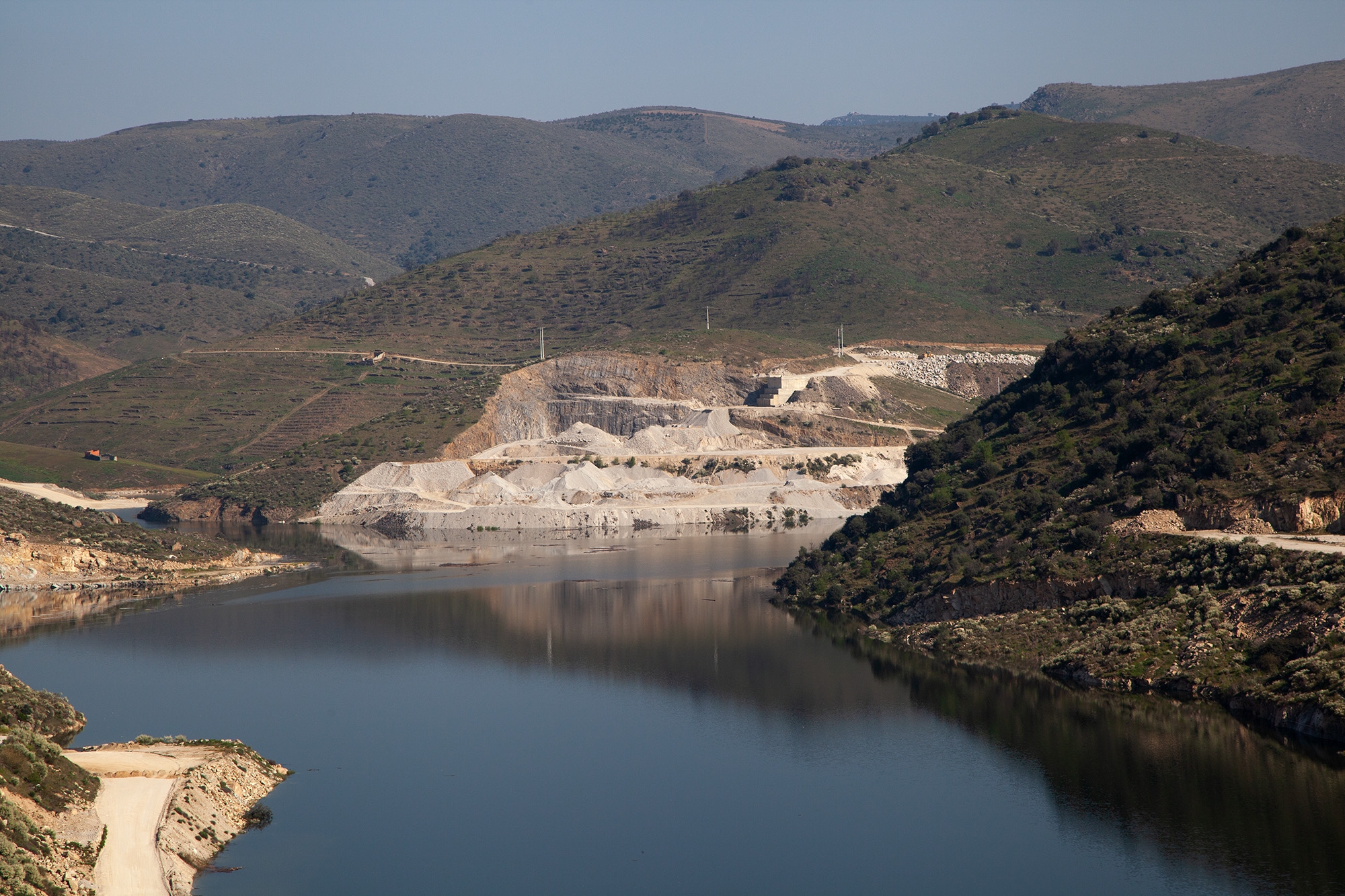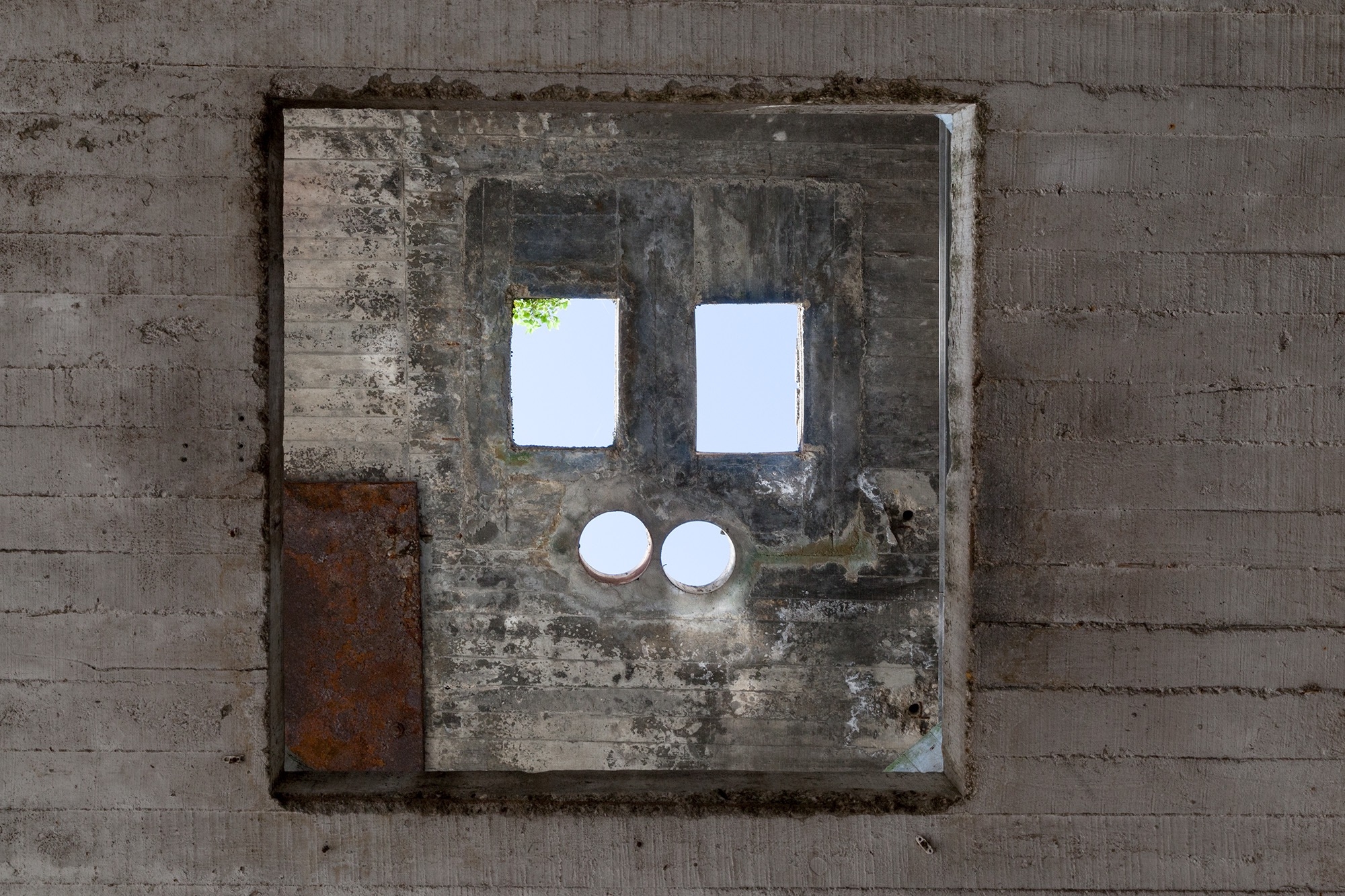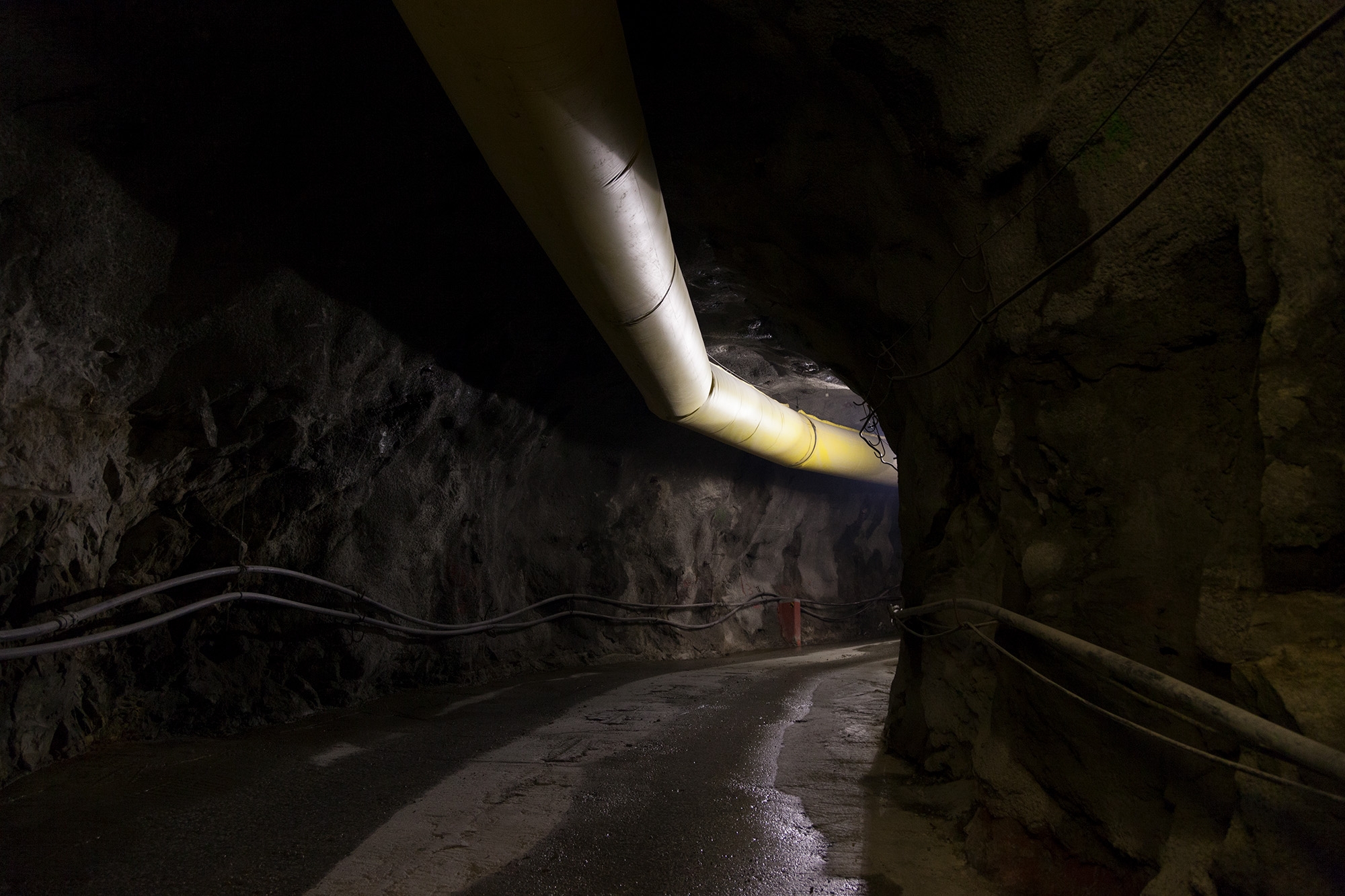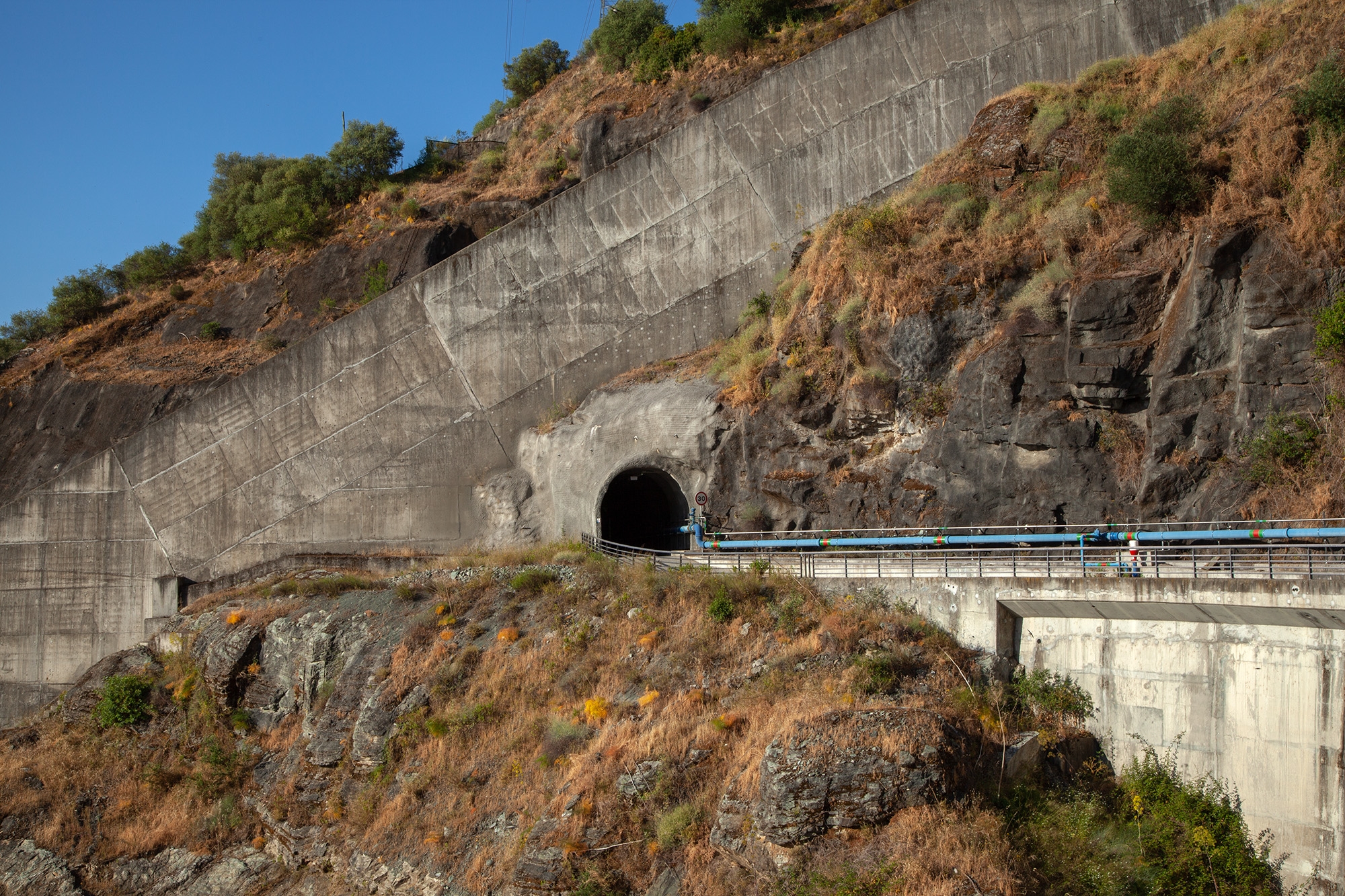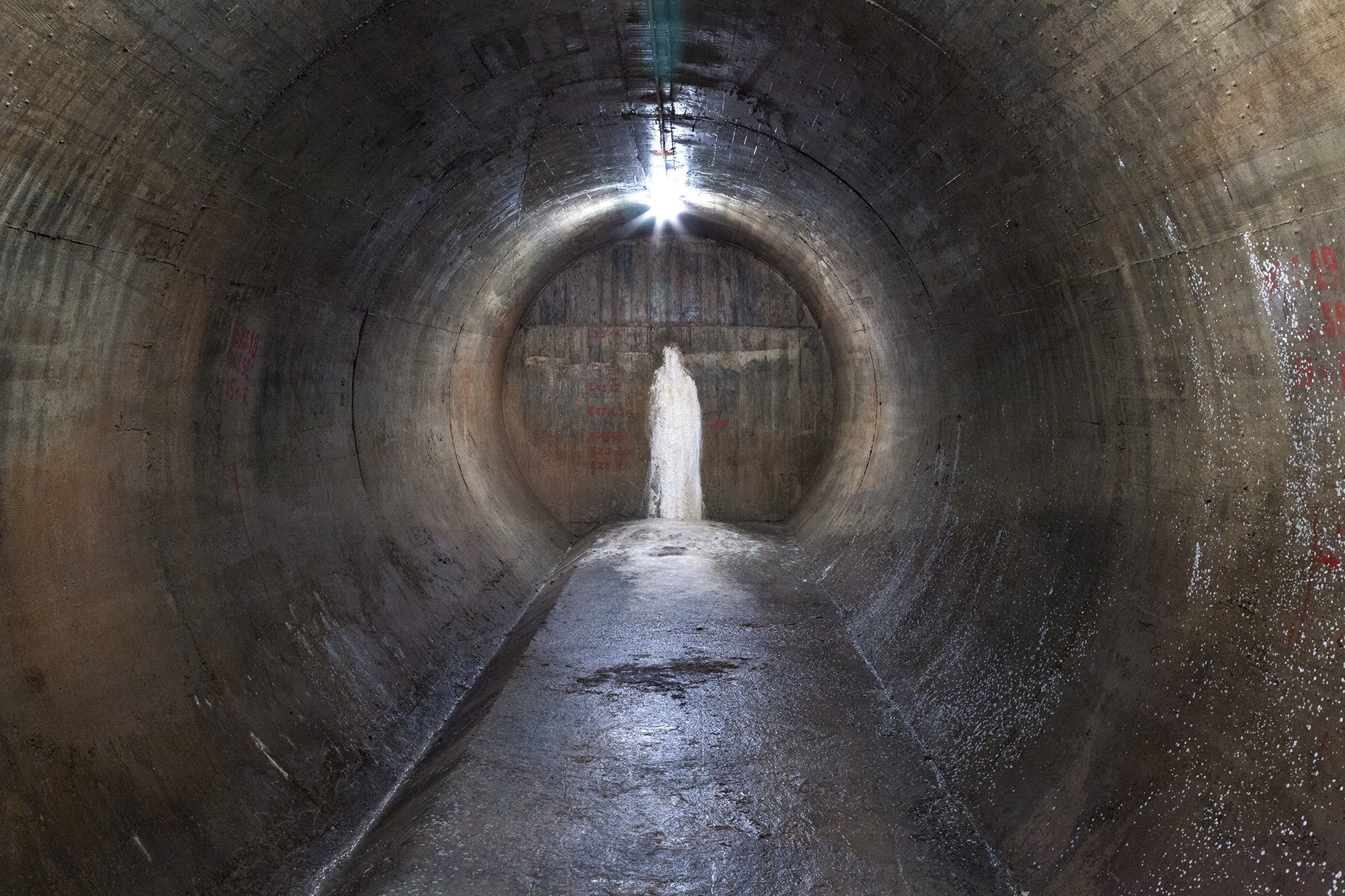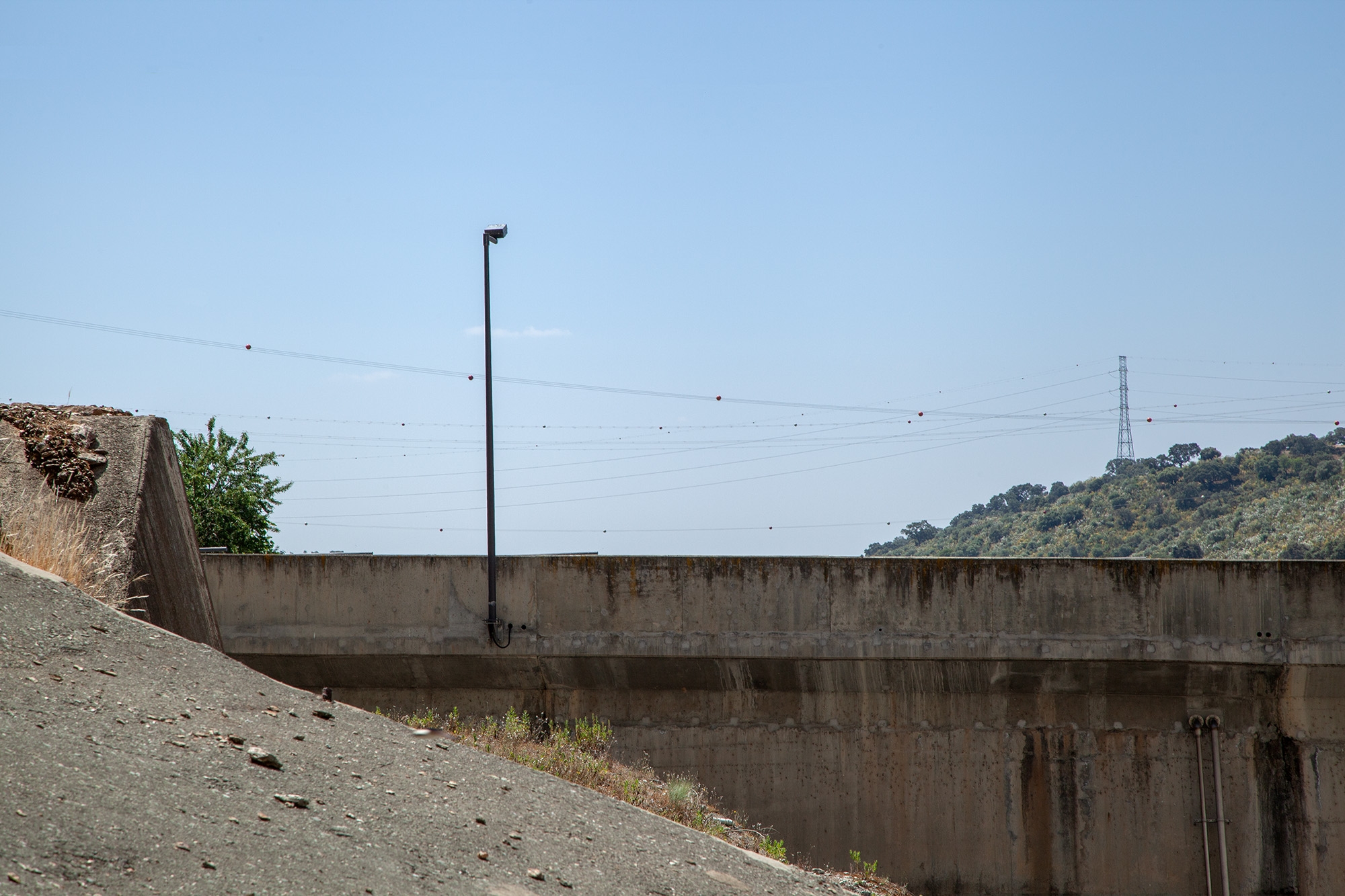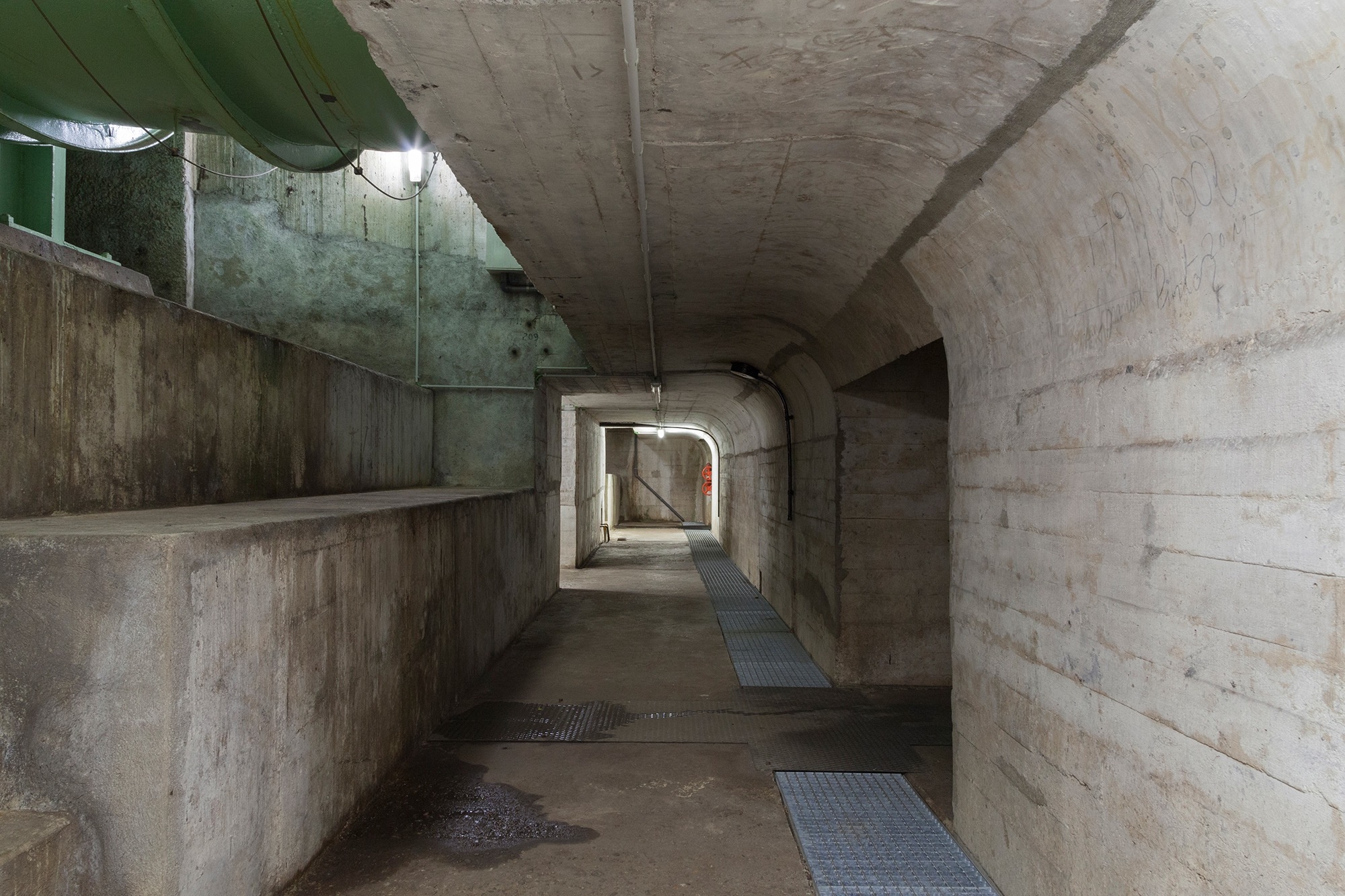Vortex
2015
8 Inkjet prints on Hahnemühle Fine Art Baryta paper
100 x 67 cm | 80 x 53 cm | 40 x 60 cm
In Vortex, beyond the immediate visual perception of the photographs there’s also an aesthetic quality of a profoundly disruptive action, which is gutting the mountains in order to ultimately restrain the waters. The underground tunnels of the electric industry, seen in this photographic series, place us on the edge of fantasy. We’re left staring at these photos as if the ground is removed from under our feet and we’re petrified between the imaginary world present in science fiction films and the virtual feeling of being sucked in due to the apparent proximity to the black holes. They can be merely passages, caves or volcanoes but in these mysterious places there are sublime risks that tempt us to observe them in spite of the vertigo they cause.
The poetics of the underground spaces is first and foremost the place of chthonic and obscure beings but it’s also through them that we daydream about the irrationality of the depths. Consequently, maybe that’s why dreams come from diurnal spaces and nightmares come from the labyrinthic guts of the earth.
Similar to human bodies, there are veins of cement interconnected with each other and areas at the edge where only water and humidity run through. In a kind of a voyeuristic way, we are deeply focused on the images of these clean tunnels and we are forced to dive into their immaculate precipices. On the other side, in the images themselves, there are enigmatic figures, or even distant pupils looking back at us, that emphatically connect to our optic nerve. Between the images and us there is a vortex of light as if there’s an exchange of glances and a mutual close observation.
Text: Rui Ibañez Matoso
